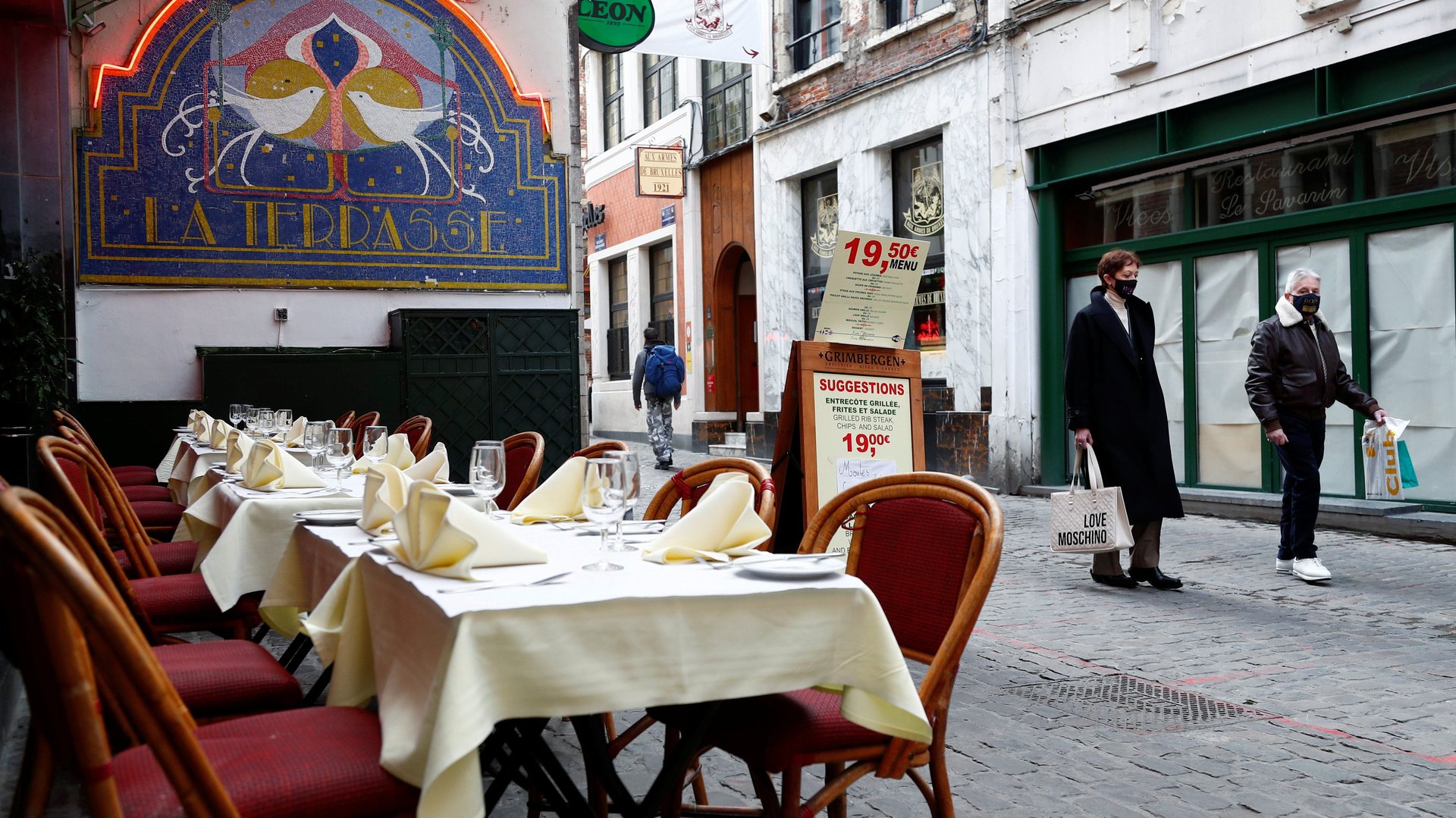To win customers’ trust, restaurants are paying to improve ventilation
To the average visitor, Pennsylvania’s Sewickley Tavern looks like a typical American pub, decorated with dark wood and tin ceilings. But the newly remodeled bar has something different under the hood. In August, it became the first US restaurant to be RESET-certified, a measure of its exceptional indoor air quality.


To the average visitor, Pennsylvania’s Sewickley Tavern looks like a typical American pub, decorated with dark wood and tin ceilings. But the newly remodeled bar has something different under the hood. In August, it became the first US restaurant to be RESET-certified, a measure of its exceptional indoor air quality.
Though the changes to its space started well before the pandemic, the tavern’s owners are likely especially happy they undertook them because of Covid-19. There’s a growing consensus among scientists that the coronavirus is airborne. It’s the reason that indoor spaces, particularly poorly ventilated ones, present a particular risk. As restaurants and other small businesses push to survive by reopening indoor operations, some are working to regain diners’ trust by paying special attention to their facilities’ ventilation—if they can afford to.
To measure how well ventilated a space is, most engineers look at the air change rate—how frequently the air is exchanged with non-contaminated outside air. In the days before Covid-19, most spaces weren’t designed to have high air change rates; they were really only used to limit body odors, the amount of carbon dioxide, and the presence of other chemical or particulate pollutants in indoor spaces, says David Krause, an industrial hygienist and founder of Healthcare Consulting and Contracting, a firm that assesses and mitigates health hazards in workplaces.
“Outside of healthcare, concerns with infection control have not been on people’s radar, nor has it been expected to be,” Krause says. “Now employers are really facing the potential of being blamed for causing infections among employees, their families, customers, patients, and visitors due to…not managing the hazards that exist in their workplace.”
More business owners and building managers are looking to boost the air change rate in their space, either by improving the ventilation (air change rate) or filtration (removing airborne particles).
Some may not have to do much at all. In some places it’s as simple as keeping windows and doors open, though that’s not possible in very hot or very cold weather. Many hibachi restaurants, for example, already have high air change rates to manage the cooking odors, Krause says. Others are using higher-quality filters in their HVAC systems, or adding air purifiers to their spaces to boost their air filtration. Krause himself has been contacted by a national chain of fast food restaurants looking to boost their air change rate from six air changes per hour, which is already pretty high. “Many consumers would be surprised at the [high] air change rates in restaurants today,” Krause says.
But many others, particularly small businesses and restaurants with standalone structures, aren’t quite sure how good their ventilation is, or how to improve it. “It’s a shame that [federal and state governments] are not supporting small businesses to assess their ventilation and get air cleaners,” Shelly Miller, a professor of mechanical engineering at the University of Colorado Boulder, said at a recent press conference held by the American Association for Aerosol Research.
Businesses that wanted to check on their ventilation could hire a mechanical engineer, an industrial hygienist, or a testing, adjusting and balancing (TAB) firm, which would run tests on the air quality in the space and make suggestions for how to improve it. For small facilities, Krause says, such a process could run a few thousand dollars; for a big office building, it could run in the hundreds of thousands. Right now a lot of this education is done by salespeople or representatives from companies selling air filtration products; their recommendations might understandably come with some bias.
But for some businesses looking to get back on their feet, such an expense might be worth it. Reopening depends a lot on public trust. What if, Miller suggests, businesses and restaurants put their air change rates in their storefront windows, like some are required to do for food hygiene standards?
“For example, if I wanted to go into a restaurant and there was a certificate saying that this facility has been inspected and has six air changes per hour with outside air and has tables distanced by six feet—if I read that, I would be more likely to eat inside,” Miller says. “Right now, I don’t know that, so I’m not going to go eat inside, I’ll get takeout instead.”
So far no state or federal government has suggested requiring such a rating beyond the ventilation required in building codes (Miller says she talked to a city official in Boulder and had plans to talk with the governor of Colorado, but nothing’s come of it yet). But that wouldn’t stop businesses that want to post it on their own. “This could easily be a verification or validation carried out by mechanical engineers or industrial hygienists by measuring the air change rate in a facility, and to have that posted,” Krause says.
Permanent modifications to a space could have benefits beyond Covid-19. “In the longer term, ventilation is always something that can improve health of indoor environments and its occupants,” Miller says. “I’m thinking restaurants, people hang out for an hour or two, but most don’t focus on how healthy the space is.” Cooking emissions (in restaurants mostly removed via exhaust hoods) and other volatile compounds can be detrimental to health.
Better ventilated spaces could have other benefits related to communicable diseases, such as the seasonal flu. “Covid isn’t the first outbreak of pandemic we’ve seen,” Krause says. “We’d be foolhardy to think it’s the last.”